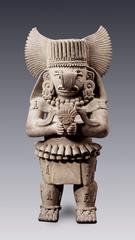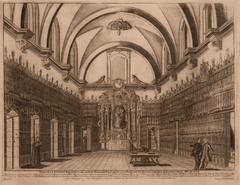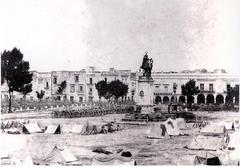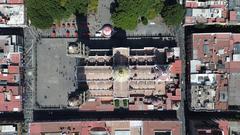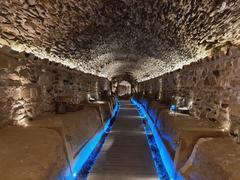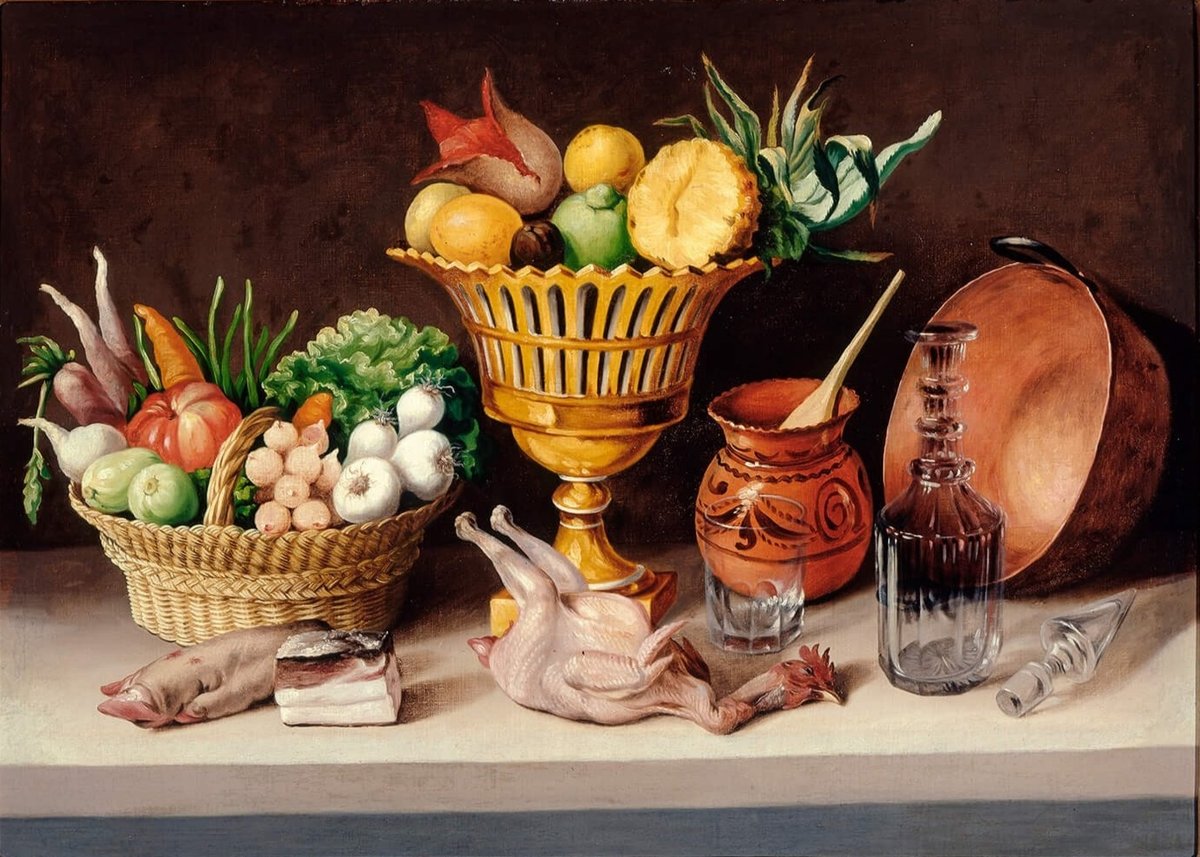
Visiting Museo Amparo in Puebla: A Complete Guide
Date: 17/07/2024
Introduction
Discover the rich cultural tapestry of Mexico through a visit to Museo Amparo, situated in the heart of Puebla. As one of the most significant historical sites in Puebla, Museo Amparo offers visitors a unique opportunity to immerse themselves in centuries of Mexican art and culture. Inaugurated on February 28, 1991, the museum was established by Manuel Espinosa Yglesias and his wife, Mary Street Jenkins, in honor of Amparo Rugarcía de Espinosa Yglesias (Museo Amparo). The museum is housed in two colonial-era buildings, the Hospital de San Juan de Letrán and an 18th-century mansion, both of which have been meticulously restored to preserve their historical and architectural integrity (Puebla Travel Guide).
Museo Amparo’s collection spans pre-Hispanic, colonial, modern, and contemporary Mexican art, offering invaluable insights into the country’s rich cultural heritage. From artifacts of ancient Mesoamerican civilizations to religious art from the colonial period and contemporary works by prominent Mexican artists, the museum’s diverse exhibits are a testament to Mexico’s dynamic cultural history (Museo Amparo Collection). Enhanced by a significant renovation and expansion project completed in 2013, the museum now features modern exhibition spaces, a rooftop terrace, and a café, providing an enriched visitor experience (TEN Arquitectos).
Table of Contents
- Introduction
- Origins and Establishment
- Architectural Significance
- Collection and Exhibits
- Expansion and Modernization
- Visitor Information
- Travel Tips
- Educational and Cultural Programs
- Recognition and Awards
- Impact on the Community
- Future Prospects
- Frequently Asked Questions (FAQ)
- Conclusion
Exploring Museo Amparo - History, Visiting Hours, Tickets, and More
Origins and Establishment
The Museo Amparo, located in Puebla, Mexico, was inaugurated on February 28, 1991, thanks to the philanthropic efforts of Manuel Espinosa Yglesias and his wife, Mary Street Jenkins. The museum was named in honor of Amparo Rugarcía de Espinosa Yglesias, Manuel’s wife, who passed away in 1971. The establishment of the museum was part of a broader initiative to preserve and promote Mexican art and culture (Museo Amparo).
Architectural Significance
The museum is housed in two colonial-era buildings—a former hospital and a mansion. The hospital, known as the Hospital de San Juan de Letrán, dates back to the 16th century and was one of the first hospitals in the Americas. The mansion, on the other hand, was built in the 18th century and showcases the Baroque architectural style that is prevalent in Puebla. The restoration and adaptation of these buildings for the museum were carried out with great care to preserve their historical and architectural integrity (Puebla Travel Guide).
Collection and Exhibits
Museo Amparo boasts an extensive collection that spans pre-Hispanic, colonial, modern, and contemporary Mexican art. The pre-Hispanic collection includes artifacts from various Mesoamerican cultures, such as the Olmec, Maya, and Aztec civilizations. These artifacts provide invaluable insights into the rich cultural heritage of ancient Mexico. The colonial collection features religious art, furniture, and everyday objects that reflect the blending of indigenous and European cultures during the colonial period (Museo Amparo Collection).
Expansion and Modernization
In 2010, the museum underwent a significant renovation and expansion project, which was completed in 2013. The project was led by the renowned Mexican architect Enrique Norten and his firm, TEN Arquitectos. The renovation aimed to modernize the museum’s facilities while respecting the historical significance of the buildings. New exhibition spaces, a rooftop terrace, and a café were added, enhancing the visitor experience. The modernization also included the implementation of state-of-the-art technology for the preservation and display of the museum’s collections (TEN Arquitectos).
Visitor Information
- Visiting Hours: Museo Amparo is open from Tuesday to Sunday, 10:00 AM to 6:00 PM. It is closed on Mondays and certain public holidays.
- Tickets: General admission is $80 MXN. Students, teachers, and senior citizens with valid ID have free entry. On Sundays, admission is free for all visitors.
- Guided Tours: The museum offers guided tours in both Spanish and English. Pre-booking is recommended.
- Special Events: Check the museum’s website for information on special events, temporary exhibitions, and educational workshops.
Travel Tips
- Getting There: Museo Amparo is located in the historic center of Puebla, which is easily accessible by public transport, taxi, or car. There is limited street parking available.
- Photography: Photography is allowed in most areas of the museum but without flash. For photography enthusiasts, the rooftop terrace offers stunning views of Puebla.
- Nearby Attractions: After visiting Museo Amparo, explore nearby attractions like the Puebla Cathedral, the Palafoxiana Library, and the Zócalo, Puebla’s main square.
Educational and Cultural Programs
Museo Amparo is not just a repository of art and artifacts; it is also a vibrant cultural center that offers a wide range of educational and cultural programs. These programs include workshops, lectures, guided tours, and temporary exhibitions that aim to engage the public and promote a deeper understanding of Mexican art and culture. The museum also collaborates with other cultural institutions, both nationally and internationally, to bring diverse and enriching experiences to its visitors (Museo Amparo Programs).
Recognition and Awards
Over the years, Museo Amparo has received numerous accolades for its contributions to the preservation and promotion of Mexican cultural heritage. In 2014, the museum was awarded the prestigious “Premio Iberoamericano de Museos” by the Organization of Ibero-American States (OEI) for its innovative approach to museum management and its commitment to cultural education. The museum’s efforts in conservation and restoration have also been recognized by various national and international organizations (OEI Awards).
Impact on the Community
Museo Amparo has had a profound impact on the local community in Puebla. It has become a cultural hub that attracts both residents and tourists, contributing to the city’s cultural and economic vitality. The museum’s educational programs have also played a crucial role in fostering a sense of pride and identity among the local population. By providing a space for the exploration and celebration of Mexican art and culture, Museo Amparo has helped to strengthen the cultural fabric of Puebla (Puebla Cultural Impact).
Future Prospects
Looking ahead, Museo Amparo continues to evolve and adapt to the changing cultural landscape. The museum is committed to expanding its collections and programs to reflect the diversity and dynamism of Mexican art and culture. Plans for future exhibitions and collaborations with other cultural institutions are already underway, ensuring that Museo Amparo remains at the forefront of cultural innovation and education in Mexico (Museo Amparo Future).
Frequently Asked Questions (FAQ)
- What are Museo Amparo’s visiting hours? Museo Amparo is open from Tuesday to Sunday, 10:00 AM to 6:00 PM. It is closed on Mondays and certain public holidays.
- How much are tickets for Museo Amparo? General admission is $80 MXN. Students, teachers, and senior citizens with valid ID have free entry. On Sundays, admission is free for all visitors.
- Does Museo Amparo offer guided tours? Yes, the museum offers guided tours in both Spanish and English. Pre-booking is recommended.
- What are some nearby attractions to Museo Amparo? Nearby attractions include the Puebla Cathedral, the Palafoxiana Library, and the Zócalo, Puebla’s main square.
Conclusion
Museo Amparo stands as a beacon of cultural preservation and education in Puebla, Mexico. Since its inception, the museum has played a critical role in safeguarding and promoting Mexican art and culture through its extensive collections, educational programs, and community engagement initiatives. The museum’s commitment to innovation and excellence has been recognized with numerous accolades, including the prestigious “Premio Iberoamericano de Museos” awarded by the Organization of Ibero-American States (OEI Awards).
Beyond being a repository of art and artifacts, Museo Amparo has significantly impacted the local community by fostering a sense of pride and identity through its educational programs and cultural events (Puebla Cultural Impact). As the museum continues to evolve, it remains dedicated to expanding its collections and programs, ensuring that it remains at the forefront of cultural innovation and education in Mexico (Museo Amparo Future). Plan your visit to Museo Amparo today to experience the rich cultural heritage of Mexico firsthand and stay updated on the latest exhibitions and events by following the museum on social media or visiting their official website.
References
- Museo Amparo. (n.d.). Retrieved from https://museoamparo.com
- Puebla Travel Guide. (n.d.). Retrieved from https://www.puebla.travel
- Museo Amparo Collection. (n.d.). Retrieved from https://museoamparo.com/coleccion
- TEN Arquitectos. (n.d.). Retrieved from https://www.ten-arquitectos.com
- OEI Awards. (n.d.). Retrieved from https://www.oei.int
- Puebla Cultural Impact. (n.d.). Retrieved from https://www.puebla.travel
- Museo Amparo Future. (n.d.). Retrieved from https://museoamparo.com/futuro

